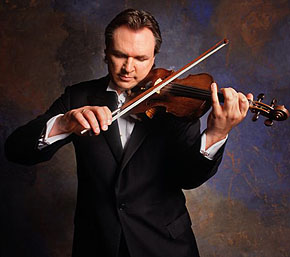
Famed American fiddler Mark O’Connor has just released the first two installments of his new string method entitled The Mark O’Connor Violin Method. Savvy teachers will quickly find many similarities with the popular Suzuki Method.
Progressive repertoire, heavy emphasis on listening, and the sequential introduction of new techniques are all pedagogical practices which were first brought into mainstream string education by Dr. Shinichi Suzuki. His method’s followers will be happy to see that O’Connor’s system has been largely based upon these principles. During an interview with Laurie Niles, editor of Violinist.com, O’Connor acknowledges the similarities between Suzuki’s method and his own:
“I patterned my method after some of the great methods out there, especially Suzuki, because they introduced very young people to a sequence of tunes. That’s something that is also inherent in folk music learning, too.”
The method comes with a CD to aid the aural learning process (which O’Connor recorded himself). The fundamental difference in the O’Connor approach is the repertoire chosen for this process.
The method is already receiving critical acclaim. The New Yorker hails it as “An American grown rival to the Suzuki Method.” But don’t mount your horses yet, Suzuki teachers. O’Connor affirms that his intention was not to steal any thunder from the popular Japanese method. In fact, he sounds surprisingly like the late Shinichi in describing his aspiration: “Getting kids to fall in love with learning to play music is the great concern.”
Inside the first two volumes of the violin method books are much more than transcriptions of American folk tunes (some written by O’Connor). There is essentially a complete history of American folk music to accompany the physical learning process. Much of this history is neglected in public music education, something O’Connor hopes to change.
Imagine this: instead of variations on Twinkle, how about 11 variations on Boil ’em Cabbage Down? Substitute Lightly Row with Amazing Grace, and Perpetual Motion with Hoedown. Have we really deviated so far as to feel like traitors of the Suzuki Method? I think not.
While some teachers have taken a quick (read: stubborn) defense to protect their beloved pedagogy from the competition of “another method,” I hope the majority of Suzuki educators can see the benefits of integrating the Mark O’Connor Violin Method into mainstream string education.
To say that it can be used as supplemental repertoire for Suzuki teachers would be putting it lightly. The two methods can be used in conjunction with each other. In test groups, Suzuki students have been very receptive to the repertoire and have embraced learning the American fiddle style. Is this style so different from the classical style taught through the Suzuki Method books? O’Connor does not think so.
“Ultimately, violin technique is the same, whether you are playing fiddle music, classical music, jazz or any style.”
So why not switch it up every once in awhile? If a student is noticeably bored with their current repertoire, or is in danger of losing interest altogether, why not give them something completely different? There is nothing wrong with a little more ammunition.
Follow the words of Laurie Niles, Editor of violinist.com:
“If you can’t go forward, go sideways for a while… Learn the same thing, a new way. Teach the same thing, a new way.”
Mark O’Connor talks about his new violin method in an interview with Violinist.com
Mark O’Connor discusses his technique with the New Yorker
"News related to the modern world of classical music."






[…] many genres, including jazz. More recently, he has generated buzz for his new violin method, The Mark O’Connor Violin Method. The method bears ideological similarities to the time-tested Suzuki Method, but guides its […]
Bravo to your comment, “If a student is noticeably bored with their current repertoire, or is in danger of losing interest altogether, why not give them something completely different? ”
So often music students do lose interest because they don’t relate to a particular genre. Teachers prefer that their students be engaged and an alternative could prove motivating.
The key difference between the two methods is the musical content. The Suzuki method draws on the classical repertoire and introduces it to students from the beginning. The O’Connor rep presents a completely different style of music. It is a matter of exposure. If one style or the other is not presented, the young student won’t get the whole picture until later, possibly missing out on what truly engages them and even perhaps, risking abandonment of study.
Introducing alternatives is all good!